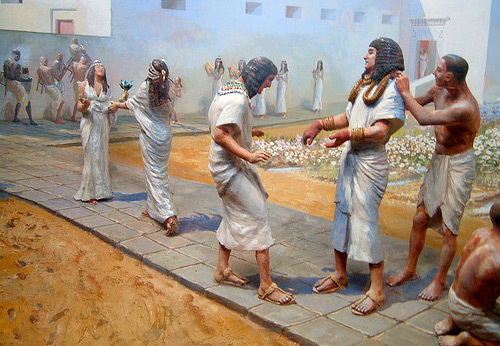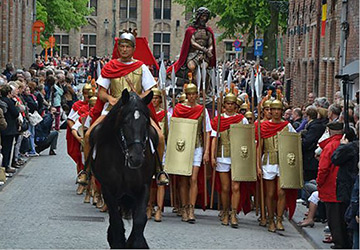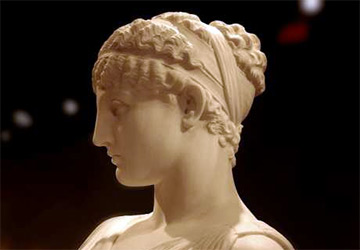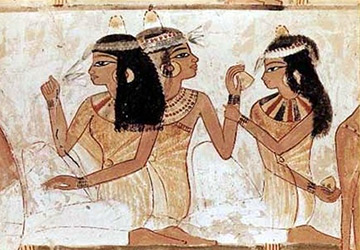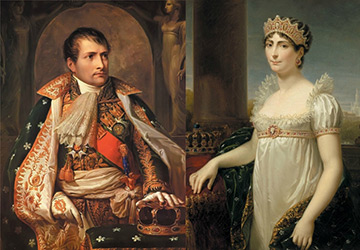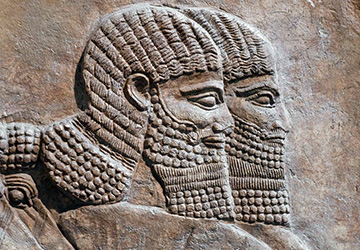Fashion history
Ancient Egypt Hairstyles
Everyone is afraid of time, but time is afraid of pyramids
Historical reference:
Ancient Egypt is a state that existed in the Nile River valley in Northeast Africa in the period from ca. 3000 BC to 30 BC.
It is with the pyramids (powerful, eternal) that Ancient Egypt is associated in the first place. But, as they say, everything that was not invented in Ancient Egypt was invented a little later by the Chinese. The ancient Egyptians were not only excellent builders, astronomers, mathematicians, doctors, but also excellent hairdressers. However, then even such a word did not exist - a hairdresser.
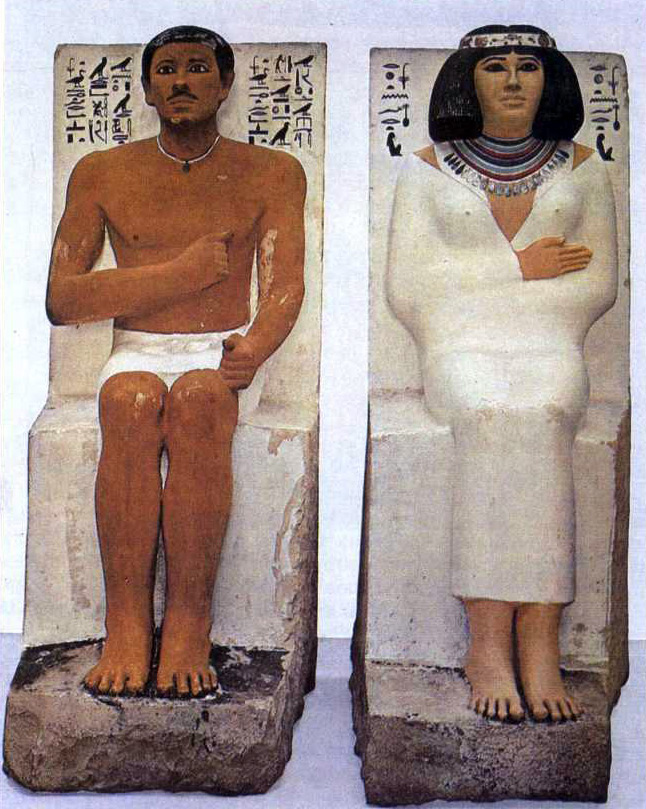
Statue of the royal son Rahotep and his wife Nofret, III millennium BC Egyptian Museum, Cairo.
Nofret is a wig, Rahotep is a short haircut.
And if the clothes of the Egyptians were quite simple and uncomplicated - a piece of fabric wrapped around the body, tied at the hips, draped over the shoulders, then the hairstyles were particularly complex.
The inhabitants of Ancient Egypt made hairstyles both from their own hair and from wigs. Moreover, hairstyles from their own hair were most often worn by poor and ordinary people, or young people (men - short haircuts, women - straight loose hair, sometimes slightly curled). Pharaohs, queens, as well as priests and officials wore wigs.
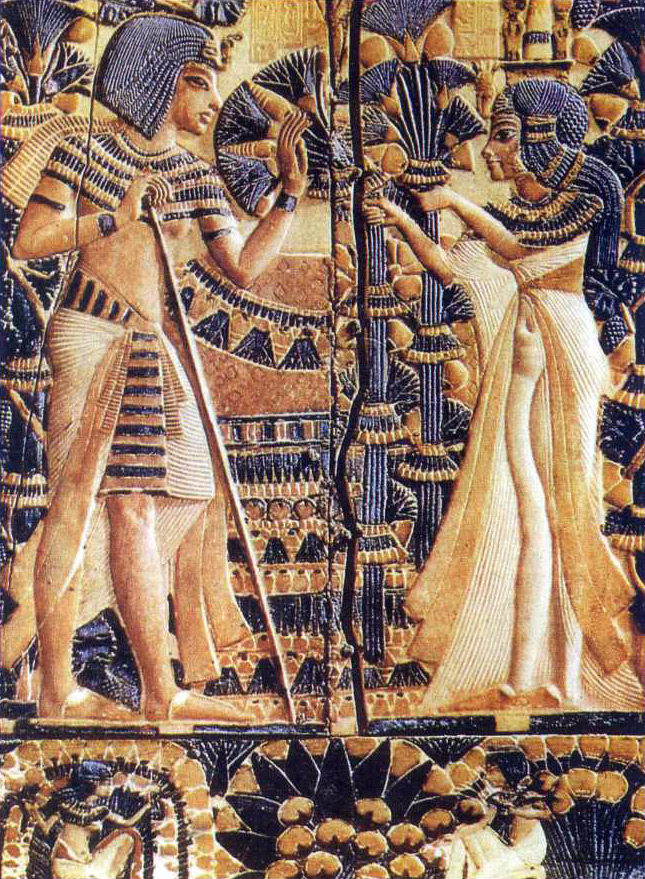
Tutankhamun with his wife in the garden, relief on the casket lid, XIV century. BC.
Tutankhamun and his wife - wigs.
Wigs in Ancient Egypt were made from natural hair (the most expensive wigs at all times), animal hair, threads, ropes, plant fibers. Egyptian wigs were always dark in color, only in the last centuries of the existence of the Egyptian civilization multi-colored wigs appeared - blue, orange, yellow.
Wigs, like everything that surrounded the inhabitants of Ancient Egypt, had a geometric shape and clear lines.
Both men and women shaved their heads under wigs. Since the climate in Egypt is hot enough, in order not to get sunstroke, very often two wigs were worn, dressed on top of each other, between which an air gap formed, which protected from heatstroke.
Women's wigs could be of a wide variety of shapes - in the shape of a ball, "teardrop" shape, "three-part" (hair descends to the chest and back), with a flat top and hair, divided into two parts and with exactly trimmed ends.
A feature of the priests (clergy) were huge wigs, as well as, no less huge, masks of sacred animals.
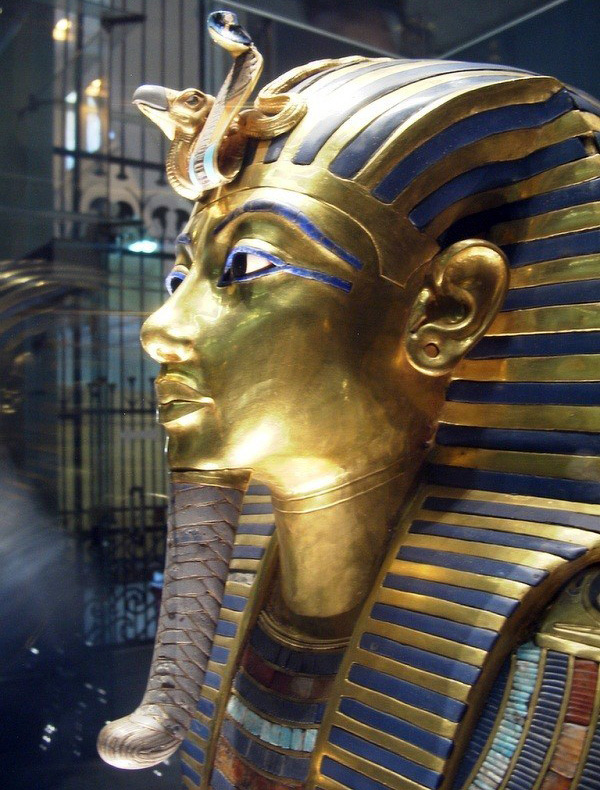
Burial mask of Tutankhamun. New kingdom. Egyptian Museum. Cairo. Egypt.
Urei and claft are visible on the mask of Tutankhamun.
All men in ancient Egypt carefully shaved their faces. They did this with the help of a special device - a sickle-shaped one made of bronze or stone. Only the Pharaoh could afford to wear a beard (and then an artificial one). Pharaoh wore a beard regardless of whether he was a man or a woman. By the way, in the history of Egypt there was only one female pharaoh - Hatshepsut. Everyone knows Cleopatra although she ruled Egypt, she was only its queen. The pharaoh's beard was considered a symbol of land ownership, and only the pharaoh was the owner of the land in ancient Egypt.
The pharaoh's beard was artificial, rather thin and elongated - it somewhat resembled a goatee. The beard could be braided or curled at the end. Sometimes a gilded snake was woven into the beard - the urey - a symbol of the power of the pharaoh.
Children (both girls and boys) walked with shaved heads, on which only one strand of hair was left at the left temple, or several strands that were braided into a pigtail.
The headdresses of the ancient Egyptians were no less interesting and complex.
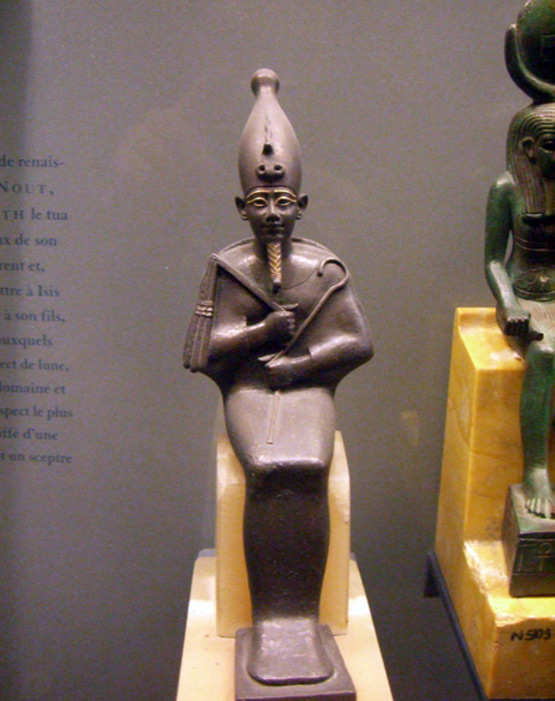
Statue of Osiris, Louvre, Paris
On the statue you can see the crown of millet and the beard of the pharaoh.
(Osiris is a god, but Osiris is a ruler at the same time.)
Pharaoh's crown - millet - resembled a ring in shape with a bottle inserted into it. The crown was double, like Egypt itself, consisting of, when combined into one, two parts - Upper and Lower Egypt. Also, the crown was two-color - red and white - the colors-symbols of Upper and Lower Egypt. The pharaohs wore the crown of millet over caps, scarves or small caps made of flax. Pharaohs also wore a reed crown - atef, as well as a double crown, which was decorated with images of a cobra and a kite.
Very popular among all Egyptians was klaft - a scarf tightly fitting the head, striped. Such a scarf had three ends, two of which fell to the chest, and the third to the back.
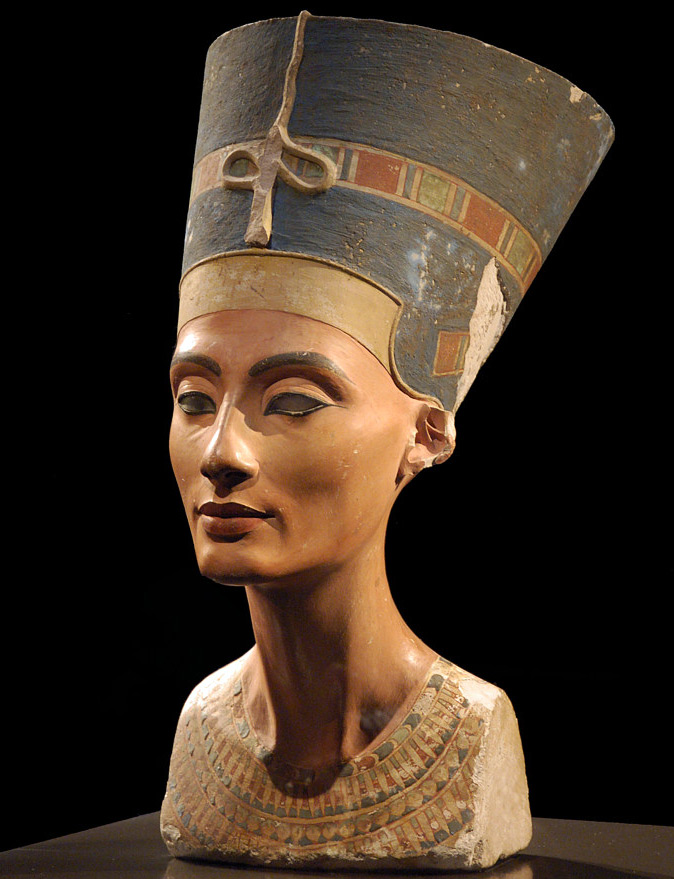
Bust of Nefertiti, c. 1351-1334 biennium BC. Limestone. New Museum, Berlin.
Crown in the shape of a cylinder.
As for the Egyptians, they practically did not wear headdresses, dispensing with wigs. The only exceptions were the queens. The crown of the queen was a headdress in the form of a bird's figure - the figure of a falcon with spread wings. Such crowns were made of gold and decorated with precious stones. However, the most famous and beautiful Egyptian queen Nefertiti wore a completely different crown - a simple, cylindrical shape.

A still from the film "Cleopatra" 1999.
Queen's crown in the form of a falcon.
The inhabitants of Ancient Egypt were very fond of decorating themselves with complex hairstyles and headdresses, They loved more wigs only decorations and cosmetics, which were used by everyone - both men and women. For example, noble Egyptians dyed their eyelashes and eyebrows with kohl powder (antimony, a black stone, crushed into powder) without fail, and green circles were drawn around their eyes with malachite. The last Egyptian ruler, Cleopatra, was very fond of cosmetics, she even wrote a book on cosmetics - "About medicines for the face." She was on the shore Dead sea, and his own perfume factory, which was presented to her by Anthony, the Roman commander.
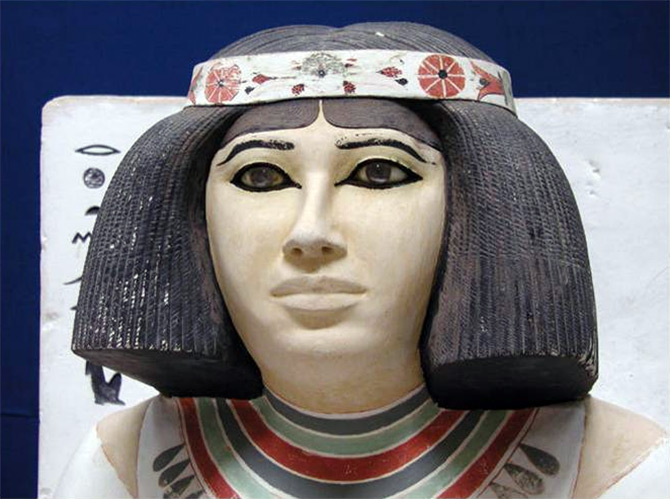
Nofret. Eyeliner.
Fragment of a statue of the royal son Rahotep and his wife Nofret, III millennium BC.
Since toilet procedures in the time of Cleopatra were performed by slaves, it can be assumed that barbers in Ancient Egypt were also slaves. And this will not be surprising, because it is known for sure that hairdressers in Ancient Greece were slaves. But that's a completely different story.
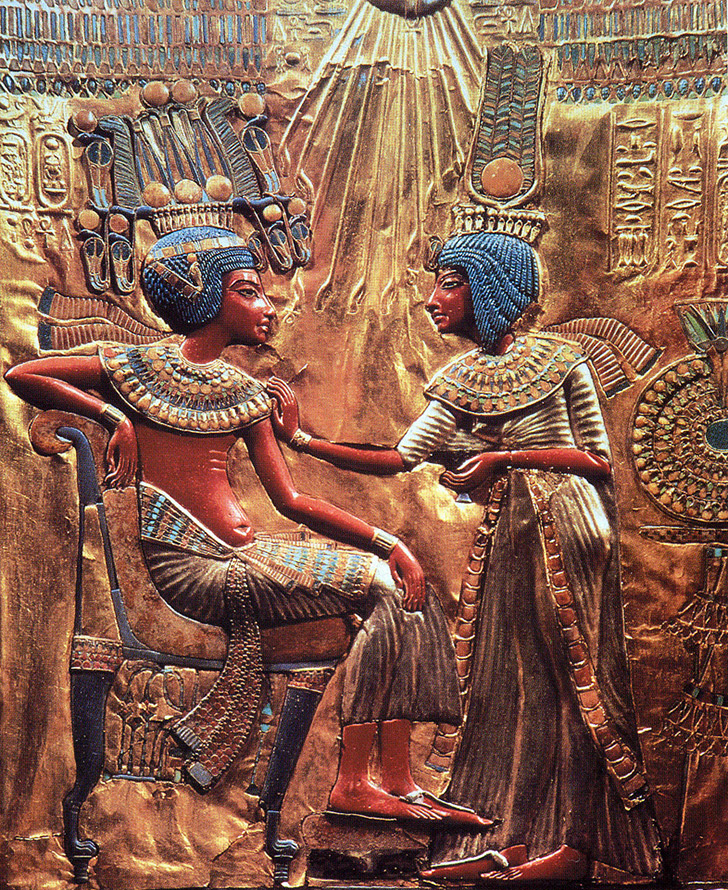
Veronica D.
Comments and Reviews
Add a comment
Rating news
Shades of clothing that make women look younger
What shades of hair make women younger: rules and photos
Funny wedding dresses - photos and ideas
12 most expensive down jackets for the winter
How to look 25 at 40: tips from supermodels
Beautiful schoolgirls
Anti-aging haircuts and hairstyles for women
Fashionable skirts for autumn and winter
Fashionable women's trousers for the cold season
Fashionable and stylish sandals for summer 2024
Spring-summer 2024
 Fashionable dresses and tops with thin spaghetti straps
Fashionable dresses and tops with thin spaghetti straps
 Bandana tops: how to wear stylishly and beautifully
Bandana tops: how to wear stylishly and beautifully
 How to put together the perfect men's wardrobe for the summer
How to put together the perfect men's wardrobe for the summer
 Fashionable shorts for spring-summer 2024
Fashionable shorts for spring-summer 2024
 Fashionable skirts for spring-summer 2024: a guide to online shopping
Fashionable skirts for spring-summer 2024: a guide to online shopping
 The most fashionable dresses spring-summer 2024: styles and colors
The most fashionable dresses spring-summer 2024: styles and colors
 Fashionable total look 2024: ideas of images and trends
Fashionable total look 2024: ideas of images and trends
